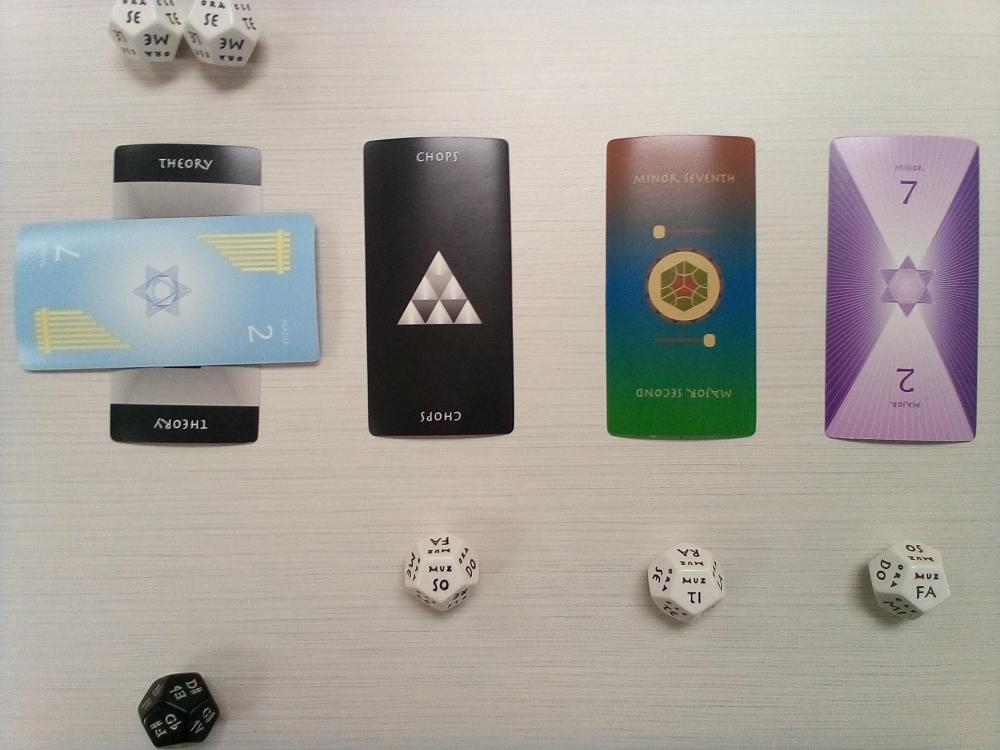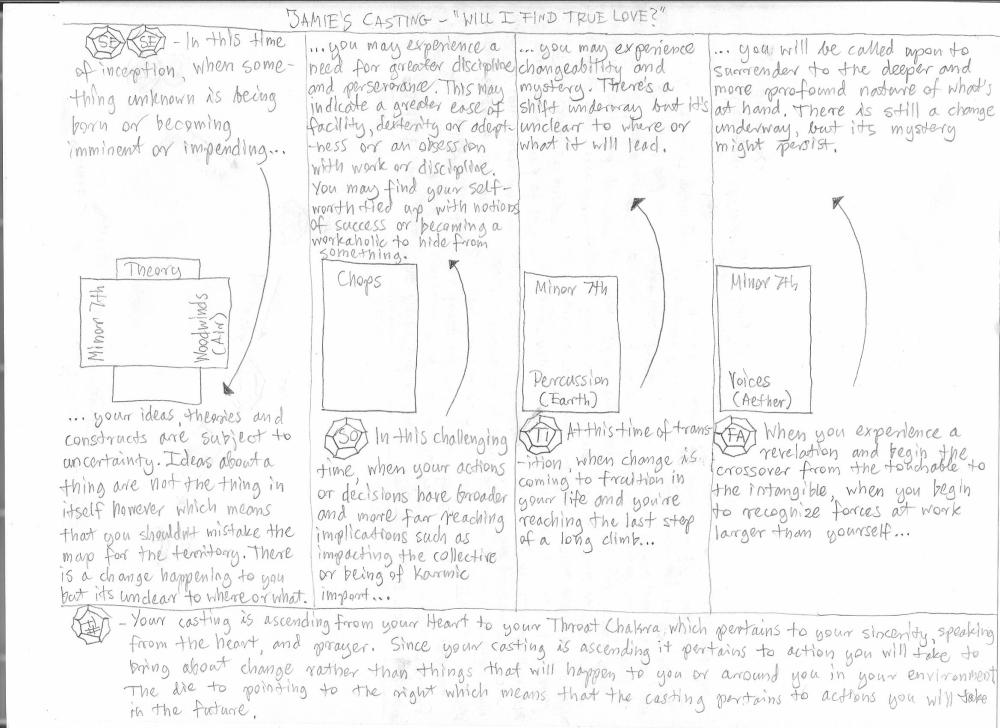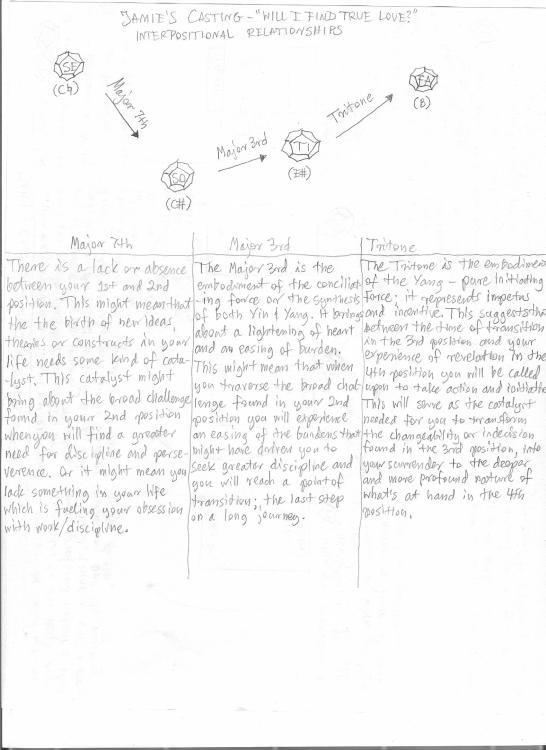Leaderboard
Popular Content
Showing content with the highest reputation since 04/12/2024 in all areas
-
Wow, this is so great! You're a gifted writer, and I really love the fact that you took to heart your goal of constructing the entire symphony from the rising then falling motif. Brilliant execution of that. I admit I heard this when you first posted, but something this massive took a while with repeated listens to really figure out what I could even say, or what I even wanted to say haha. This is just bloated with drama, and a great introduction of your symphonic prowess. I've noticed that no matter what I'm writing, part of who I am and what my personal situation is leaks out into the notes. I'm curious how personal this is to you, since it's your first symphony "no.1" (😛)? It sounds so emotional that I'd have a hard time believing it was all puzzle fitting and theory crafting. I really enjoyed the overall arch of the dynamics. Even though it was slow, as you say, it had plenty of motion and variation within it that it wasn't a bother to me. But this kind of crescendo then diminuendo of the dynamics overall throughout it's duration was really cool, and helped make it cohesive as a one movement symphony. The melodies are all superb, it's so rich in emotional depth to me. I love how you're a phenomenal string player, but you didn't make this about the violin. The tossing around of motifs and careful planning of color balance was a treat. I also can't thank you enough for hiding empty staves, it makes it so much easier to read and much more worth a composer peer's time. I love this kind of discussion. THIS is what makes people better at composition. There's no right or wrong here, just opinions from talented people. I agree with Peter in a way. I'm not sure if he meant a literal scherzando, but a change in texture would be advantageous, especially for a one movement symphony. Right at M, I love where you go here. But I think this would have been the perfect spot to build your motif in a faster rhythmic way. I love the heavy drama here, the light-heartedness might not fit. But I found myself continuing to relisten to this spot, where it builds really massively and then ends solemnly. I just kept zoning out, and I think it's because I was so used to the slower texture that my ears wanted a change rhythmically. If this was movement 1 of a multimovement work, I think it's more than fine as is. But as a one-movement symphony, it may have been something to consider deeper, and definitely for future thought. Overall though, this piece of yours hits closer to my heart than you might know, as I'm almost done with a long symphonic work that's slower... and in the same key sig... and nearly as long... But I digress. 😄 Lovely music, wonderfully clean score, and congratulations on completing your first symphony! I've listened to this numerous times now, and can say that I'll reference this when I have my own orchestration or notation questions. Extraordinarily beautiful composition 🙂3 points
-
So anyway, the last time I tried to write a symphony was almost 8 years ago, and it was so terrible that it's now called Symphony No. 0 and we never speak of it. I was 15 at the time. I suppose (most) teenagers aren't generally known for writing great symphonies. But I recently tried again. This is now my Symphony No. 1. I just finished it today. It's in one vast, slow through-composed movement. I wonder if, as you listen, it is obvious who my main stylistic influences were. The entire piece is built from one motif, the three-note figure that bookends the whole thing of the rising leap followed by the falling step. I've been working on this for about six months. This symphony was the product of a lot of experimentation and often changing course on the fly. Not only have I never written this much slow music all at once before, but these are the largest orchestral forces I've ever handled, with the greatest variety of orchestral color at my disposal. It's also the first time in a while I have allowed myself the luxury of a harp, as previously I had always been wary of giving myself the opportunity to commit any of a number of common orchestration blunders. I'm enjoying the fruits of the new Muse Sounds I have gained access to by virtue of switching to Musescore. They're wonderful. They can be a bit buggy, but sometimes it's almost scary how human they sound. Curious about how this will be received.2 points
-
As the poster above me asked: How well do you know your theory and the craft of composition? If it is simply that you're feeling stumped, or struggling to get it to sound how you want, then this is usually the source. I would also recommend you get a MIDI controller to input notes into Musescore that way if you don't already. It would be painfully slow trying to input it with mouse and keyboard. Your piano trio may go faster if you use a DAW and kontakt libraries instead of musescore. Then, you can just record your piece in real time, and with pianos, you don't have to worry about keyswitches and other MIDI annoyances. Honestly, it really isn't. Especially if your goal is concert/neo-classical stuff. It is better to put out 5 pieces per year that are amazing, then to release 10 middling ones just because you feel you have to hit a certain number. Even from the most iconic composers, only a handful of their pieces are really well known to the masses. In many cases, the composer spent anywhere from weeks to years writing them. Even bands, who typically are doing way simpler music than classical; each new album is a result of 1-2 years (or more) of songwriting and selecting the best ones for the album. Back in the days of record deals, labels would demand an album of X number of songs within a short time-frame, which is partly why "Girls, Girls Girls" is the only decent song on that album. Also, remember that Carl Douglas's only song of note was 'Kung Fu Fighting' 50 years ago and he wound up with a net worth of 5 million. In other words, if no one is breathing down your neck to get this done and paying you to do so, take all the time you need. Lastly, since you say you're in school it's safe to assume you're pretty young: Know that the field of professional orchestral and neo-classical music is not a pursuit for low-time preference individuals; it is mainly an old man's game. I lucked out when I was 18, and got my first professional job, but that is an extreme rarity. Most guys don't see any success (financially or otherwise) until they have DECADES of experience under their belts. So aside from the aforementioned advice, I'd say: Take your time, and just keep chipping away at your pieces. Even 1 bar a day is progress. Because as the saying goes:2 points
-
Hi @PeterthePapercomPoser and @Hcab5861! I've modelled the overall texture and soundscape off of the bass aria of BWV 159 (which is imo the most beautiful aria Bach has ever written). The omission of a harpsichord continuo and the strings "harmonic halo" are both completely intentional - I want the mood of the music to be gentle, warm, embracing. In addition, I'm a little bit torn on Da Capo form. I think it works well in duets but by default I tend to avoid it. From a singer point of view I don't get excited about singing the first part of the piece exactly twice, and from a compositional point of view, your ritornello theme better be REALLY good to warrant a minimum of four exact repetitions (but more typically six to eight repetitions including fragments), at least for those themes that are tonally closed. I much prefer the scheme of ABA' in these cases (e.g. see the alto aria in BWV 197), where A ends in the dominant and A' ends in the tonic.2 points
-
Hey all! I just completed what was for me a massive project, Three Scenes for Ensemble is a set of chamber pieces (one of my first compositions) which I composed and recorded at the legendary Hansa Studios in Berlin. I felt this would be a great place to get some feedback. I know it's a ton of music, but it would be incredibly helpful to even if focus on one measure to show an example of different choices I could have made orchestration-wise, harmonically, notation-wise, etc... Thank you in advance and I hope you enjoy! If you would like to support please consider also listening on Spotify. Score Video: About the Music! Credits: Composer: Nicholas Schuman, Flute: Thomas Hahn, Oboe: Anna Schulkowski, Clarinet: Constance Morvan, French Horn: Melinda Gál, Piano: Daniel Zhao, Cello: Josiah Simonds, Sound Engineer: Arne Bergner, Assistant Engineer: Marian Hafenstein2 points
-
Hot dang boy are you lucky. You got a review from @Henry Ng Tsz Kiu. Man, just typing @H pulls up Henry first. He's our forums most illustrious member, and anything he says is Chinese wisdom we all learn from. Sorry, I'm an unsuccessful clown with a guitar. 🤔 This was great! And wow, for your first piece, you have a studio performance? Wow, holy opportunity! I hope you asked them every question in the book, because the more you know of their instruments, the better you'll compose for them. Do they work with your school? What's it like to study abroad and record in Berlin? It sounds like you have an incredibly interesting story to tell 🙂 I agree with Henry with the score being rife with labeling and coloring. It's cool to see your analysis, and there is an audience for that. It shows you care enough to explain in further details questions listeners might have, or that you know your stuff. But I'd post a version of just the score too; I bet it would get more views than the analysis version 😉 Your music is lovely, and for your first composition, this shows a lot of promise. I like that your background is film scoring and the like. It'll help shape your voice, because it's your inspiration. But I really encourage you to study up on the great composers. Watch Youtube for hours of the score videos. It's free, bruh. Look up Romantic-era composers first; it seems to suit the style of the film people. But let it lead you to others. Study scores of Chopin and Beethoven (and WOW, many more!) if you're writing for piano. A lot of your parts are elementary and conservative, especially in solo moments. Guess what, that's ok! You made it work, you went through the recording process, the whole shebang. You COMPLETED your project, and you followed through. That's what it takes to make it in my eyes, to see it through to the end. Congrats 🙂 My advice, like I said, is to keep studying up on the instruments. I forget... do you play an instrument? It would be greatly beneficial to you to continue to explore one instrument in it's full capacity and to write for it in tandem with your school studies and projects. I'm a guitarist, and my knowledge gained of the instrument always leads me to perpetual new ideas about what other instruments might be able to achieve. You seem like you have a lot to offer the musical world, and hopefully the forum here. There are loads of talented people here to learn from, and their advice is free. And if you want piano pieces performed, Henry Ng charges $1,000,000 USD for a complete full album. It's worth it Oh yeah, welcome 😄2 points
-
This dialog is pretty much correct I think. There's a difference between writing something abstract and writing something unidiomatic and needlessly difficult. Hiding behind supposed goals of abstraction and complexity to excuse bad writing is not an easily definable thing, but like pornography according to the Supreme Court, "you know it when you see it" if you are a relatively experienced composer. My use of harp is very sparing, but that's roughly in line with how it should be used. As Thomas Goss (of OrchestrationOnline) says: decoration, filigree, support. The harp is like dessert, adding great delicacy to a thin texture but rapidly becoming stale if overused. Every orchestration challenge he issues stipulates NO HARP CONCERTOS for a reason: beginner composers see the double staff and get overexcited about what they (think they) can give the harpist, and wildly overestimate the instrument's real capabilities. At the end of the day the harpist has an ungodly difficult part that just gets drowned or forgotten in the texture. Let the harp do what it does best. The harpist won't mind if they have to sit and count some rests any more than my poor trumpet players will. They're paid to do that, so to speak. Notice that some of the most idiomatic harp writing I employ comes in the come una danza sections where I use glissandi and rolled chords - two extremely common and standard harp techniques to just add some background lush flavor to the texture. The exact notes played, insofar as they make the right chords, aren't important. The most I have the harpist do in a foreground role throughout the entire piece is that little dainty rising scale in the reprise of the danza. Again, decoration, filigree, support. To the other point, this work is actually not drawing on minimalism at all. The glacial note values are an emotional expression tool, not an attempt to simplify or pare anything down. My contrapuntal lines are actually fairly intricate a lot of the time even when the note values are long and the textures are thin.2 points
-
Timeless Dance.mp3 Hello, i have been learning composition in DAW for about one and half year. Looking for honest opinion about my work and maybe some advice how to improve. I hope your ears dont bleed to much while listening 😅1 point
-
1 point
-
I had a similar issue while writing for orchestra, so I get that feeling. You can select the rit. and go to Properties (either go to View -> Properties or press F8) and change the slowing rate of the rit. to what you need. You can start at a slightly slower tempo if that helps the rit. slow just to your preference. If it's not to your liking (or if you knew that already), hiding them works too.1 point
-
This opportunity is seeking composers from anywhere in the world who have heard no more than 5 of their pieces premiered across their life to submit (not including self-performed premieres) to receive: $400 paid commission to compose a 5-10 minute work for solo EFX clarinet (clarinet and guitar FX pedals) Premiere of the commissioned piece by professional clarinetist Chris Mothersole Professionally recorded and mastered track of the commissioned piece Professional engraving of the commissioned piece by Evan Erickson Sponsored by Dorico, a copy of Dorico Pro 5 ($579) Sponsored by Wallander Instruments, a copy of Noteperformer 4 ($129) Submissions close June 16th with no required entry fee. Click here for more details and the application form: https://www.evanericksonmusic.com/2024-call-for-scores1 point
-
Hey this is cool, kind of like Brubeck type of stuff. There's a lot of fun rhythmic stuff happening, and I love all the crunchy chords. That's awesome your friend is having you do the music! Will we get to see the final project?? 😄 I think this definitely fits thematically for what you're going for. The static harmonies work well with the intense rhythmic drive. You don't have chord symbols for the music yet, I would definitely do that. You unfortunately have some things that are impossible to play on guitar, and an experienced guitarist might have a work around if you explain the harmonic intent (if you don't know what the chord is called). For instance: Is the guitar standard tuning? There's no way to play that Bb7 shape. You could lose the top voice, but then you would lose the crunch I feel like you're going for. Just be careful with intervals of a second, as sometimes that's hard to achieve. Guitarists can take advantage of open strings, but these shapes don't line up well. The first chord (maybe just write E nat for the top voice?) is comfortable in open position, but awkward up the neck. I dunno, just my take. You seem much more comfortable with piano writing, so just another reason to make sure to add the chords to the score. That way, if the guitarist knows a quick fix and achieves what you're going for, lots of time gets saved 🙂 Great start, keep us updated!1 point
-
I really like film music and in many instances, I don’t see it as a distinct genre from classical because several great classical composers also wrote music for film which is played alongside their non-film (like Prokofiev and lieutenant kije), the forces and style are often very similar and in its greatest instances I think film music can achieve the same depths and heights as great classical compositions, and furthermore, there is a very direct evolution from Wagner and incidental music towards cinematic music, as they are fundamentally the same concept. With that said, it can also be really cheesy and cliche, especially today. Nevertheless I have a lot of “highlights” from the genre…in the interest of restriction I’ll just pick one for today.1 point
-
G'day fellas, We may associate each of the greatest composers with a condensed list of pieces that cemented their places in musical history. But now and again, we may encounter works by those same people that we feel showcase their talent, heart and soul equally or in some cases even more than many of those that made them into household names. In short, what are some of your favourite pieces from great composers that often get overlooked in favour of their more "popular" pieces? Here are a few of mine: String Quartet No. 3, Op. 30 & Souvenir de Florence, Op. 70 (Tchaikovsky) Ruy Blas Overture, Op. 95 (Mendelssohn) Tragic Overture, Op. 81 (Brahms) Violin Sonata No. 1, Op. 8 (Grieg) Cello Sonata, Op. 19 (Rachmaninoff) Symphony No. 4, Op. 60 (Beethoven) Symphony No. 3, Op. 52 (Sibelius)1 point
-
Hi, today I upload my most recent work. It's an impromptu in D-flat major in which I tried to recreate some dream-like textures within a late romantic style. I hope you like it! Impromptu.pdf1 point
-
Grieg - 4 Album Leaves, op. 28 ( all four are beautiful hidden gems to me ) Some other of his even more obscure Lyric Pieces. Sibelius: - op 24 no 9: Romance in D-flat major - 6 Impromptus, Op.5 (No. 5 Vivace: B Minor) - The Sapin Op.75-5 - Etude In A Minor Op. 76 No. 2 Heino Kaski Night By The Sea - Op 34, No 1 Oskar Merikanto: - Idyll Op. 73 No. 1 - Valse A La Chopin Op. 6 No. 5, in G minor, Piece No. 14 - Merella Op. 47 No. 4 Aarre Merikanto Six Piano Pieces op. 20 ( all six ) --------------------- Still quite well-known, but ( perhaps undeservedly ) much less known than their other pieces: Brahms Rhapsody in G minor, Op. 79, No. 2 Tchaikovsky - October of "The Seasons, Op. 3" and other months other than June.1 point
-
Hi, it sound really good and feels approviate for a religious porpuse. Well done!!! I would like to see some organ or keyboard score to have a closer look to the harmonies...I am terrible reading C key. By the way is ther a particular reason of using C keys? I sing in a religous choir myself and I have seen it very seldom.1 point
-
You guys are awesome, thank you so much for the kind words once again. Im actually studying production and sound engineering at Catalyst Institute in Berlin, and for my final graduation project we get to propose any large scale project that we want and we had about 4 months to make it all happen. It was absolutely incredible, only the cellist was from my school but everyone else are working musicians here in Berlin. I bothered them as much as I could with questions and comments and my greatest success throughout the process was the musicians themselves somewhat enjoying the music. That meant a great deal to me since they're true professionals. I do play piano, most of my life actually, but I never really practiced so now I just use it as a resource to write music. I fell in love with classical music only about 4 years ago, before that I was into classic rock and some current pop/indie music, but man it hit me like a sledge hammer and for reason I just felt like I could do it myself. The biggest issue with composing is that I read music at a kindergarten level, like barely at all. So much of the simplicity is me just not knowing how to score what I'm thinking of or even playing on the piano. The main reason I felt confident doing this whole project is because i picked up some things in terms of orchestration, so understanding the instruments even a little bit was enough for me to jump right in. Score reading is one of my weak points for sure. As often as I do it, it's so hard for me to actually use what I learn and usually still go with my instinct. I will keep working at it, possibly by narrowing my scope so I don't get overwhelmed thinking that I need to analyze a whole symphony. I love being abroad man, Berlin is absolutely incredible. A true treasure of a city, I would recommend it to anyone. the change in scenery has also been a great excuse to push myself as much as I have been, let me know if you're ever in town! 😄 Thanks again man! Best, Nick Schuman1 point
-
Many incredible moments! It is bursting with color with a subtleness not everyone can balance. Bravo! If I may begin a discussion about some of the orchestration, you are free to respond by explaining why you made these decisions rather than me just claim them as 'mistakes' whatever that means in terms of music 🙂 - The flute is much too low to be heard over the instruments, many of which play in mezzoforte. I understand it is not a solo instrument and you want it to blend, but it would be completely swallowed up. It is also too low of a register to play mezzoforte itself since these low register are very delicate in terms of air flow. Usually you would right louder passages higher on the flute and quieter passages lower. Think about how the flute works overall, the 1st partial (octave) is reached by overblowing the given note, so the lower notes need less air by the nature of the instrument. Hope this makes sense. If you wrote the part an octave up, I believe you will still achieve what you were going for since the flute is still rich and woody until you get into the higher 3rd register. Another option, would be to right it as an Alto Flute, which is one of my favorite instruments. It has an incredibly warm and beautiful quality to it. - The second violin enters in a piano dynamic at the end of the first page and later on crescendos back into piano, i dont see a real need to have a piano violin over a mezzoforte viola, maybe you meant to write mezzoforte from the beginning? - I see you thinking very much like a conductor in terms of dynamics which is great, never loose that instinct, but the players may not interpret it how you think. remember they only have their own parts so when you have violin 1 playing piano and violin 2 playing mezzopiano, there wont be much of a difference. Sometimes less is more, or at least accuracy is more. Sometimes writing 'solo' over an instrument is all you need to tell the player to stand out or even simple crescendo marking or hairpins rather than inconsistent dynamics all throughout. I would say score read specifically with dynamics in mind, probably impressionistic French or Russian composers. - Also check your rhythms to make sure you don't blur any beats. You should always be able to see a strong beat. Amazing work overall, dont let my thoughts change this great creative accomplishment. Thanks for sharing! -Nick Schuman1 point
-
I absolutely love it! You clearly have a great grasp on theme and repetition. I can also really 'feel' the off-axis left hand with those 16th rests, it works very well. The accompaniment perfectly adjusts to the highs and lows throughout. Such as the beginning of measure 15 having an up-down direction in the left hand, but in measure 17 it climbs higher, staying on the top of the staff as it crescendos. Well done!1 point
-
Hi Henry! What an honor to have such a thorough and kind response, especially to my first post. I want you to know that it truly means a lot to me. Yeah, my themes are all over the place and as much as I wanted to make sense of it all, i still have much to learn about themes and development. Much of it came from the stress of a deadline (for school) and writing segmented sections which are later forced together. I love how you discussed it's 'aura' :). You gave me new confidence with this response and very useful criticism which I will learn from. I'm most definitely very excited to go check out and discuss music from other composers on this forum. Cheers! Nick Schuman1 point
-
Are you sure your 12 distinct themes are complex and abstract or messy and absurd? Isn't the timbre of harp and strings pizz. different? Henry1 point
-
Hello, Here's the first movement of my piano sonata. Hope you like it. The recording is kind of bad and my playing as well at times but oh well. You should preferably listen to it with headphones on! 🙂 Tell me what you think!1 point
-
Hello yet again! Here's another Muzoracle casting for you. (Muzoracle is a storytelling/divination tool similar to the Tarot card deck, but with cards with musical concepts and 12-sided Musician's dice and Solfege dice.) This time, Jamie asked the Muzoracle if she will find true love: My interpretation of the cards and dice are displayed below. This time I wrote a piece for flute (because the Minor 7th card at left is in the suit of woodwinds and Jamie used to play flute), piano (because the Minor 7th card in the middle is in the suit of percussion) and soprano (because the Minor 7th card at right is in the suit of voices). If you'd like to find out more about Muzoracle and how castings are interpreted go here: https://muzoracle.com/ This time I managed to stretch out the musical materials and make them last 2 minutes. It is however just meant to be an aural representation of the casting and not necessarily it's own fully fledged piece of music with different sections (that's one of the difficulties I am having is how to bring structure and contrast to different parts of the composition while still staying true to the casting). The piece is in F# since the black 12-sided Musician's die landed on F#. The solfege dice landed on Se, So, Ti and Fa and I ornamented the piece with the minor 7ths above each degree since all the cards drawn were minor 7ths. If you've gotten this far, thanks for reading and I hope you enjoy listening to this short chamber work I wrote to represent Jamie's casting. Comments, suggestions, or critiques are of course, always welcome.1 point
-
Eh don't rack your brain over it. I like that these are very short solilo... uh, pieces. Maybe form could be left for non-dice-related music. Or maybe your forms could somehow be derived from dice... hmm... 🤔 Anyway, this is my favorite one so far. I really liked the theme this time. But, maybe since it was randomly generated I randomly liked it... HMMM So much thinking this time, yeesh. But the theme and especially the left hand piano line were stunning. Maybe take from these when you're done and develop cool ideas further for future pieces? Overall though, definitely enjoyable to hear. Maybe the flute could have faded out with the other instruments, it kinda dragged a bit at the end to me. Thanks for sharing!1 point
-
Hi @Aria Donn, I love this so so so much!!!! Not because it’s in my favourite C sharp minor, but the tragic emotion, the struggle, the hope for brightness and the disappointment is so authentic and honest here. It’s a long slow movement in 18 minutes but I never feel a single moment that is boring, since anything which has real and honest emotion is almost always worth listening to. For me I love the coherence of the movement. Even though the motive is not really strict in a Beethovanian sense, it definitely provides the tragic sound with that sighing of minor 2nd and your clash of minor 2nd (which I use in my pieces too!). The orchestration is masterful for me. Your string writing is of course masterful given how great you play violin, but your Tchaikovskian use of woodwinds and Mahlerian brass is so great a combination in different passages. I love section G onwards very very much since you invite a lot of counterpoint here and I love all those dissonance. Definitely see the influence of Bruckner here with that famous C sharp minor slow movement. The climax in section Q is so so well built, as well as the cooling down of it for quicker note values! For the ending maybe I will invite some Picardy chords before having it crushed by the tragic C sharp minor, thus making the fate more cruel and tragic!! But that’s subjective. I totally agree with your choice here. A scherzando section will ruin the tragic aura of the piece and make it a cheap soap opera! It would be strange to invite some unwanted contrast when the main body itself is so well built and logical. I love your total darkness with a bit of light here very very much. Maybe I love C sharp minor too much, I personally feel like it can stay longer at the beginning! I think the A major contrasting passage gets in a bit early in section C! But that’s personal. Thx so much for sharing your masterpiece here Donn! I enjoy every second of it and I wish it’s just a slow movement of a huge symphony like Bruckner’s 7th, so I can enjoy more from it! Henry1 point
-
Hi @Quinn St. Mark, Me like Vince don’t know the difference between them! I have never heard the term Saltarello LoL !! Watching this I think they are literally the same thing?? I really enjoy those complex chord progression! By the way, why don’t you write the piece in 12/8 so that you can cancel out all those triplets? I think those octaves in b.15 onwards can be really difficult to play! I mean even Brahms Piano Sonata or Chopin Scherzo no.3 are around the same or even slower tempo! I think like Vince said, you can develop a bit further first before having those virtuosic passages! Thx for sharing, it does look promising! Henry1 point
-
Hey there I can't help you with the saltarello tarantella difference, mainly and predominantly because I don't know (lol), but if it at all helps it starts like the famous tarantella in a minor? Speaking of which, maybe a potential direction you could take this is returning back to the quarter note rhythmic pulse you established in the beginning. In all honestly, this piece to me got insanely complex or virtuosic (why the E above middle C on beat 3 of bar 13 for the left hand? Why not an octave lower? Stuff like that). To me it would be cool to have all of that complexity and then return to the simple rhythm from time to time. I'm curious as to where you take this piece, it sounds very promising so far!1 point
-
I originally wrote the beginnings of a scherzando section that was going to appear at M, but I eventually scrapped it and put in what is there now. So it's definitely a thought I had, but I rejected it. I didn't think it fit. It broke the dramatic arc for me. I don't know very much of the oeuvre of either Bruckner or Sibelius, though I've started trying to explore Bruckner more recently and I am at least consciously aware that at times his influence did start to make itself felt as I got into the middle and end of the symphony. However, a much nearer and dearer inspiration to me is Mahler, and Tchaikovsky was on my mind heavily when composing the dance-like sections, despite me not really being aware of any specific piece by him that has those characteristics. I wasn't aiming to emulate any particular person though, so I could very well have created a hybrid style.1 point
-
I don't usually like slow movements but this is quite captivating! Once the triplet subdivisions come in it doesn't sound that slow anymore. You seem to have gotten the hang of Musescore pretty well! I find it hard to discern the theme in such slow music though and it would've been great if you had included a scherzando section for contrast. I know you subdivide the music in various ways, but those subdivisions aren't thematic. Your melody is throughout the movement plodding along at the same slow rate which makes at least that part of it a bit monotonous. This review is based on just one listening of your work though so take it with a grain of salt. As to what composers you might be emulating: might it be Bruckner? Or maybe Sibelius? That's just a stab in the dark LoL. Thanks for sharing!1 point
-
This makes sense, considering I thought this was your piece from the title. I thought, "How come Luis isn't using chord names anymore?" 😄 Lovely piece Guillem, it's very elegant and stately as the style represents.1 point
-
Hi @Hcab5861, I really like how you change the harmony for the original Twinkle melody with a chorale usage of the melody! Although it’s a figured bass scoring, I would really wanna know the RH of the harpsichord (piano) too! Thx for sharing! Henry1 point
-
1 point
-
- Symphonies: Beethoven, Bruckner, Haydn, Mozart, Shostakovich (esp. 4th & 8th) - Operas: Mozart, Verdi - Piano pieces (solo): Beethoven, Schubert, Schumann - Piano Concertos: Mozart, Beethoven, Bach - Violin solos: Bach (undisputed master), Paganini - Violin Concertos: Bach (also double concerto), Beethoven, Brahms, Khatchaturian - Cello Solos: Bach (ultimate master) - Cello Concertos: Elgar - String quartets: Beethoven (undisputed master), Cherubini, Haydn, Mozart, Schubert, Brahms, Franck, Mansurian, Shostakovich (4th, 5th, 7th & 8th in particular), Martinu - String Quintets: Mozart (undisputed master, nothing like k. 516), Schubert, Bruckner - Piano chamber music: Brahms, Schumann, Mendelssohn Categories you had failed to mention: Overtures: Beethoven Oratorios: Handel Masses: Bach, Beethoven, Mozart, Haydn Requiems: Mozart, Cherubini, Faure Ballet: Tchaikovsky, Khatchaturian Organ Solo: Bach (undisputed master) Modern Choral Favourite Composer: Pärt Favourite Modern Contemporary (Living) Composers: Pärt, Mansurian, Sharafyan Some favourites I cannot quite place into a category: Rameau, Handel (concerto grossos), Dvorak1 point
-
A very well written orchestral piece, it's quite impressive how it all comes from one theme, yet it doesn't at all feel repetitive or monotonous. If my use of the harp was "horribly excessive", this goes to the opposite extreme - the harp pretty much doesn't exist at all. There are so few notes for the harp here that it begs the question: why not just drop the harp entirely and put those notes as pizzicato in the strings instead or something like that? Funnily enough, this seems to be in a way the exact opposite of my orchestral work. This appears more minimalist and even somewhat impressionist, while mine is complex and abstract with 12 distinct themes. Was this intentional or just a normal consequence of your usual style?0 points






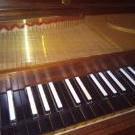
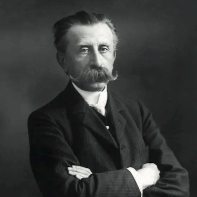
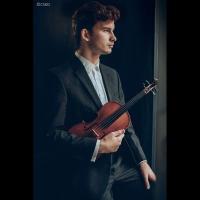

.thumb.png.8b5b433a341551e913a34392660bc95b.png)
